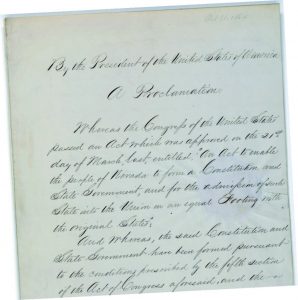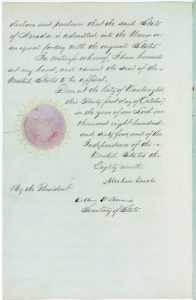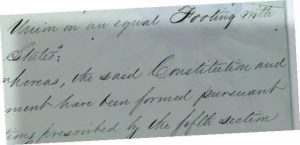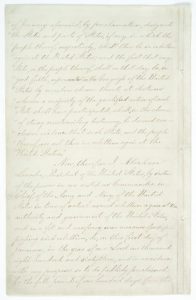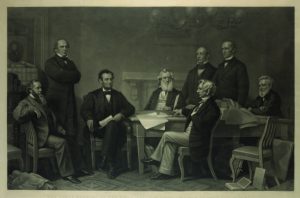Experience ‘The 36th Star’
September – October 2014
Experience “The 36th Star”
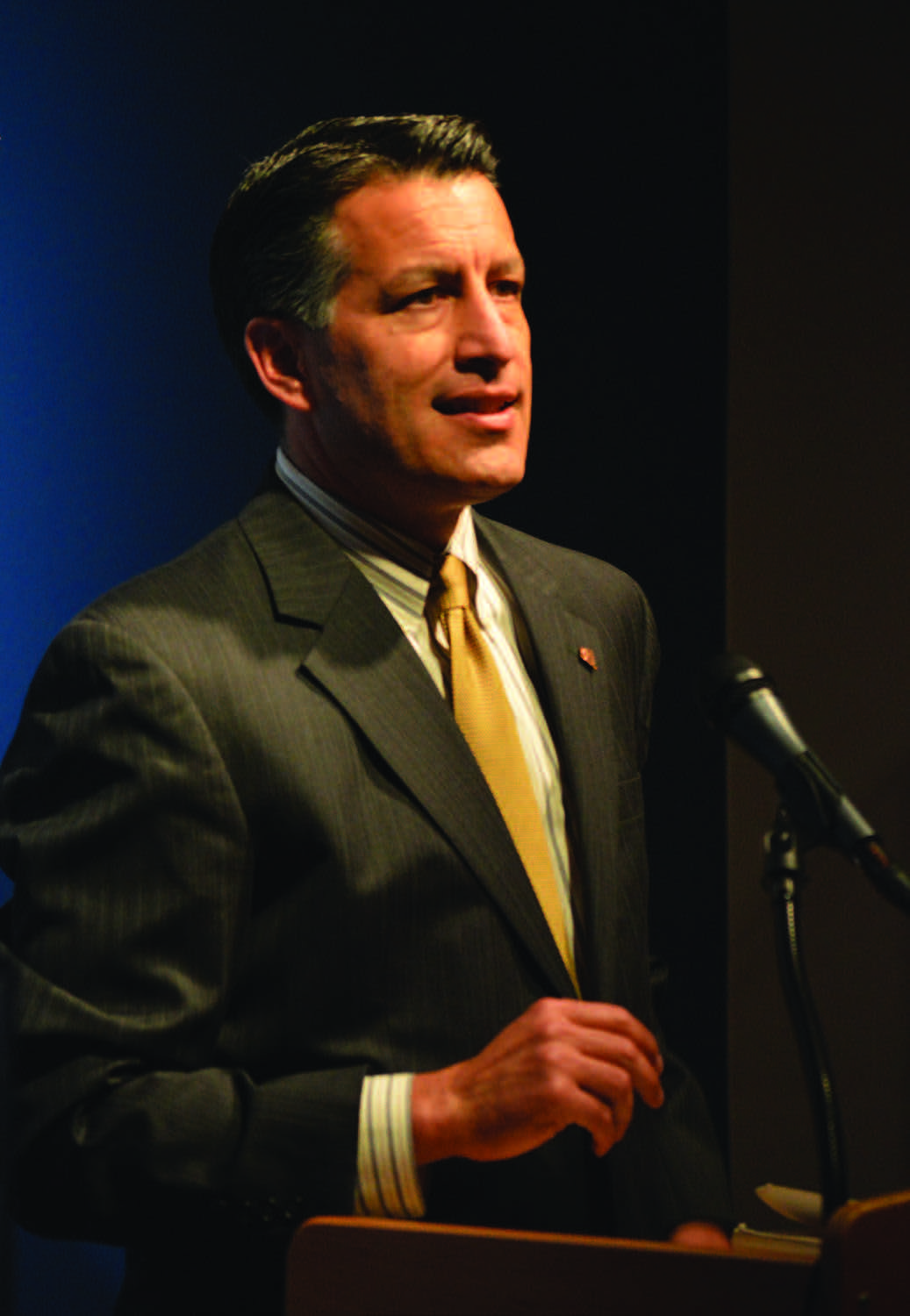
Emancipation Proclamation is Centerpiece of Nevada Museum of Art Exhibition.
BY JERI SINGLEY
As Nevada celebrates its sesquicentennial, the Nevada Museum of Art in Reno is giving visitors the chance to explore the state’s heritage through its exhibition, “The 36th Star: Nevada’s Journey from Territory to State.” Three years in the making, this one-of-a-kind exhibition brings together—for the first time—key documents and artifacts to help place Nevada’s legacy into the broader context of the Civil War and American history. The centerpiece is a four-day presentation of the Emancipation Proclamation signed by President Abraham Lincoln.
“For Nevada to have the opportunity to have it is just a generational achievement, and I am just excited for all the kids to be able to see that,” says honorary chair of the exhibition, Governor Brian Sandoval. “I still remember when I was a kid and the Freedom Train [1975] came through Nevada. I’ll remember that as long as I live, and that’s the type of memories I hope the display of the Emancipation Proclamation will create for the kids here.”
According to Nevada Museum of Art Curator Ann Wolfe, “The 36th Star” exhibit is an exploration of the motto, “Battle Born.”
“Everybody’s familiar with that adopted motto of the state,” Wolfe says, “but we wanted to ask ‘what does it really mean for a state to be Battle Born?'”
To answer this question, the museum embarked on a collaborative, three-year journey—working closely with the National Archives, the Library of Congress, and regional museums, including the Nevada Historical Society, the Nevada State Library and Archives, and the Nevada State Museum. The result is a singular exhibition featuring historical treasures from Nevada and the nation’s capital—on display through Nov. 2.
FROM TERRITORY TO STATE IN THE NICK OF TIME
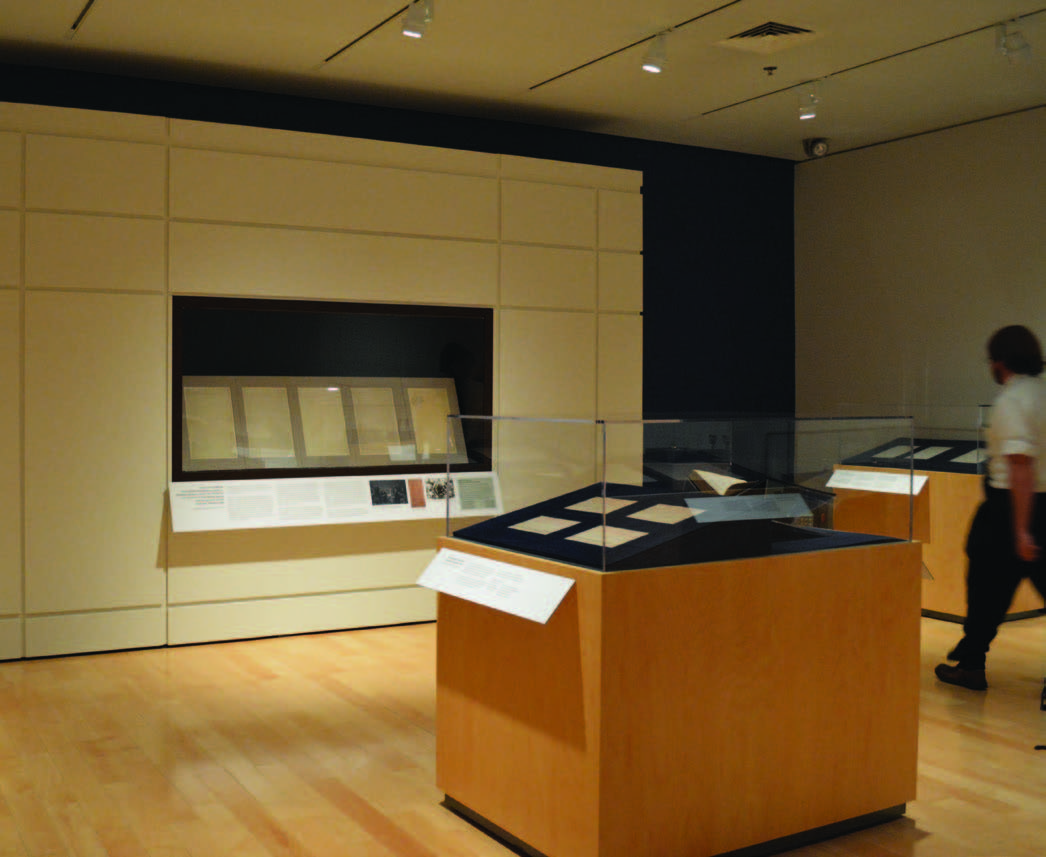
How did Nevada become a state? Chances are you’ve heard the territory’s mineral riches were needed to finance the Civil War. It’s a common explanation, persisting in some classrooms even to this day. But as retired State Archivist Guy Rocha has said many times, it’s simply not the truth. While mineral wealth was a determining factor in the decision to give Nevada territorial status, it was actually the perceived need for another pro-Union state to support Abraham Lincoln’s reelection bid that spurred the territory’s ascension to statehood.
Despite the fact that the population of the Nevada Territory was only two-thirds the size normally required for statehood, Congress passed the Enabling Act for Nevada on March 21, 1864, authorizing the formation of a state. A convention of delegates from the territory gathered in July of that year to draft a constitution, which Nevada’s voters approved on Sept. 7.
According to writer and historian Phillip Earl, one certified copy of Nevada’s Constitution was sent to San Francisco, where it was to set sail on steamship Golden Age on Oct. 3. Another was sent via stagecoach; however, when—in late October—neither copy had arrived in Washington D.C., there was concern they would not be there in time for Nevada to be accepted into the Union prior to the Nov. 8 election.
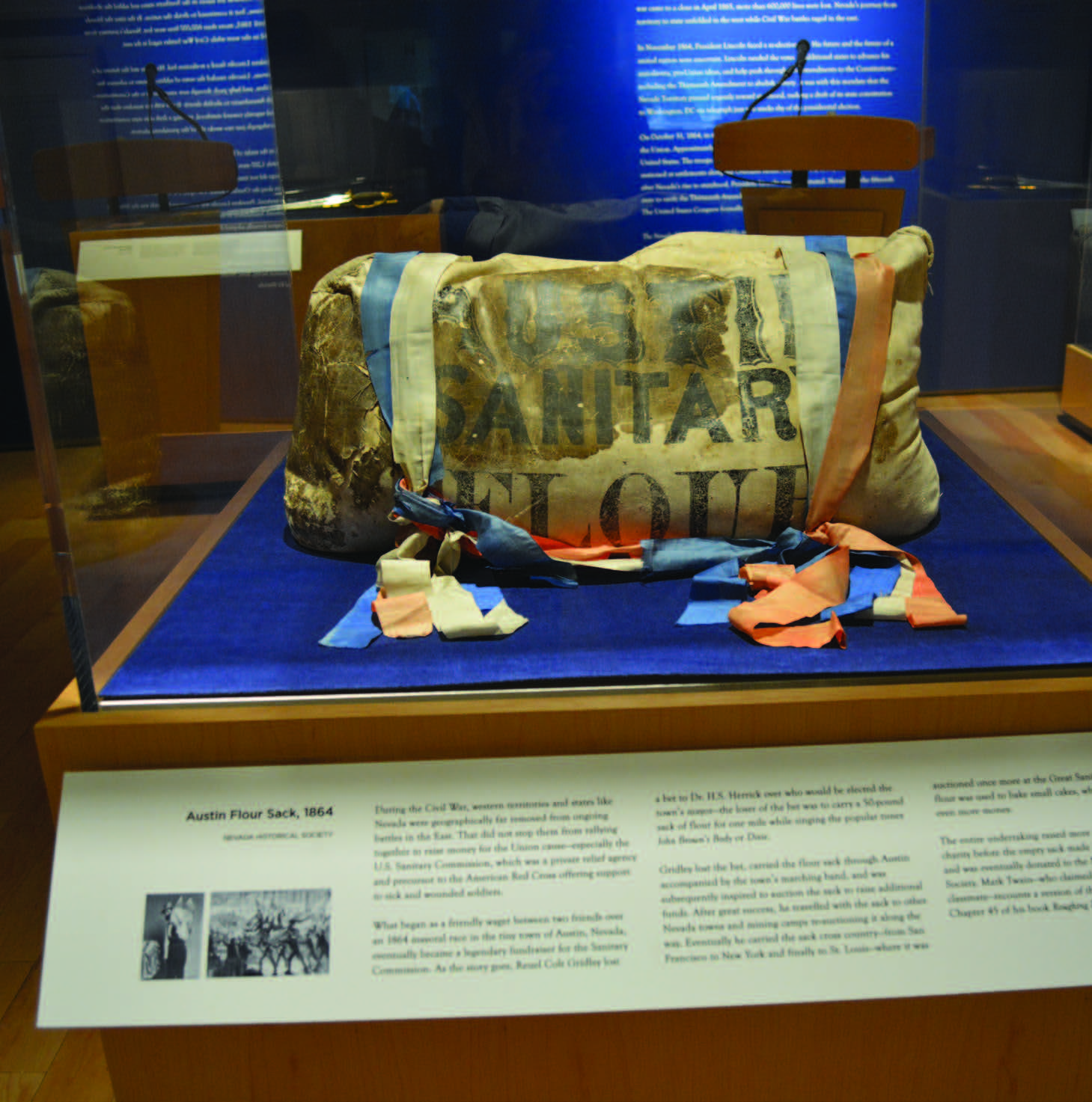
Territorial Governor of Nevada James W. Nye made the decision on Oct. 26 to send the Constitution via telegram to President Lincoln at a cost of nearly $3,500—somewhere between $50,000 and $60,000 by today’s figures. The 16,543-word message arrived two days later, and Nevada was officially declared a state on Oct. 31, 1864.
Indeed, Lincoln did win a majority of the popular vote—and both of the electoral votes cast—from Nevada, and the new state continued to support the president in his efforts to abolish slavery and rebuild the nation as the Civil War continued to de-escalate into 1865.
SIGNIFICANCE OF THE EMANCIPATION PROCLAMATION
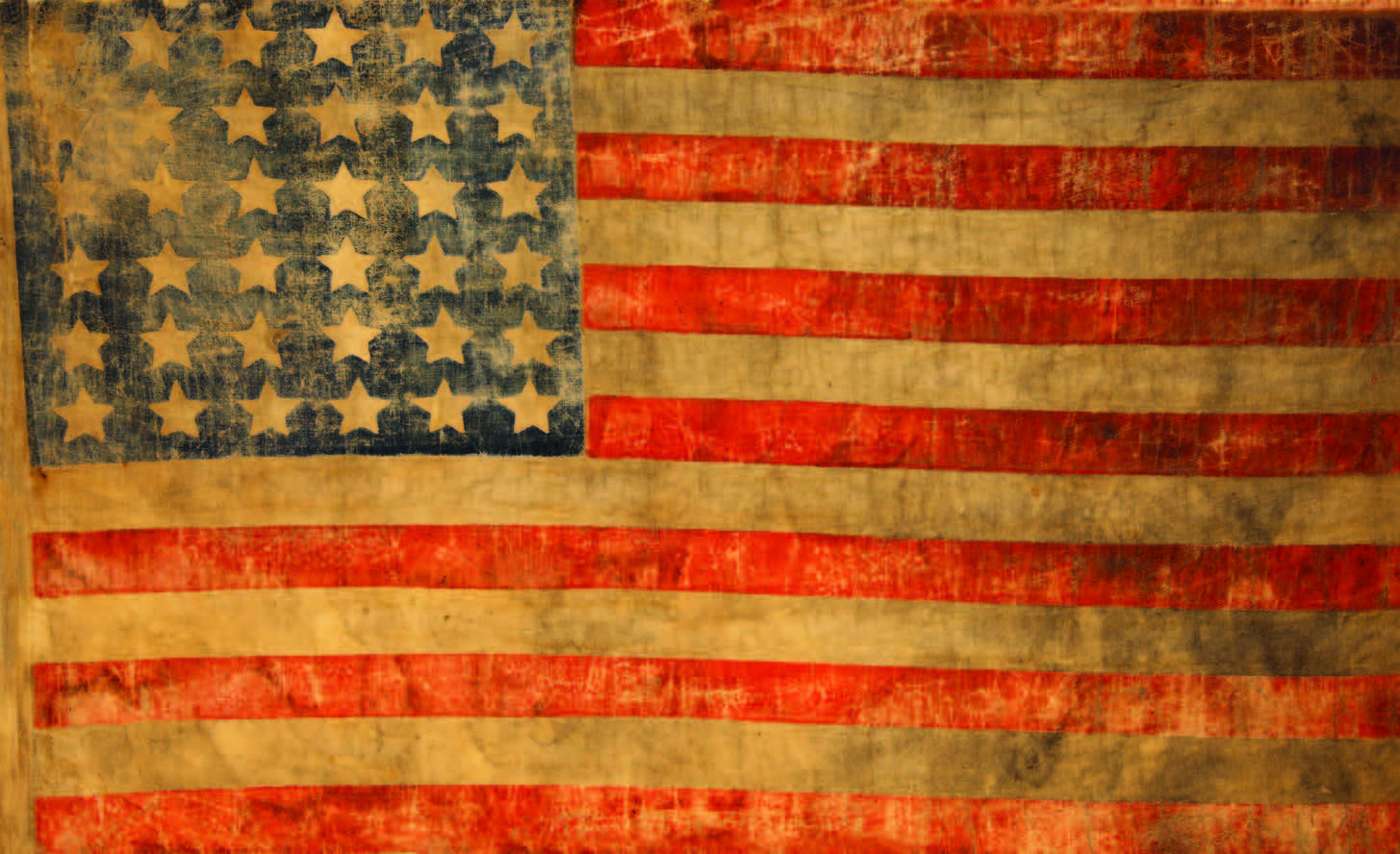
While the Emancipation Proclamation did not free every slave in the United States, it was a key step on the road toward ending slavery. In addition to setting the stage for passage of the 13th Amendment, it also signified that the Civil War was no longer solely about preserving the United States as a single nation. According to National Archives Senior Curator Bruce Bustard, issuance of the Emancipation Proclamation on Jan. 1, 1863 had many consequences.
“It solidified support for the United States in Europe. The Confederacy was trying to gain recognition from European countries, and the Emancipation Proclamation was a big support for them not recognizing the Confederacy,” Bustard explains. “It also represents one step—or an advance—in the evolution of Lincoln’s thinking about slavery too, because it was changing as he grew.”
BRINGING HISTORY TO NEVADA
The Emancipation Proclamation hasn’t been on display in Nevada since 1948 when the first of two touring exhibits of the nation’s treasures—known as the Freedom Trains—traveled through the state, making stops in Reno and Elko. The Emancipation Proclamation was among the documents aboard the first Freedom Train, which made stops in more than 300 cities across the country. The second Freedom Train—remembered fondly by Governor Sandoval—toured the country in 1975 but did not carry the Emancipation Proclamation.
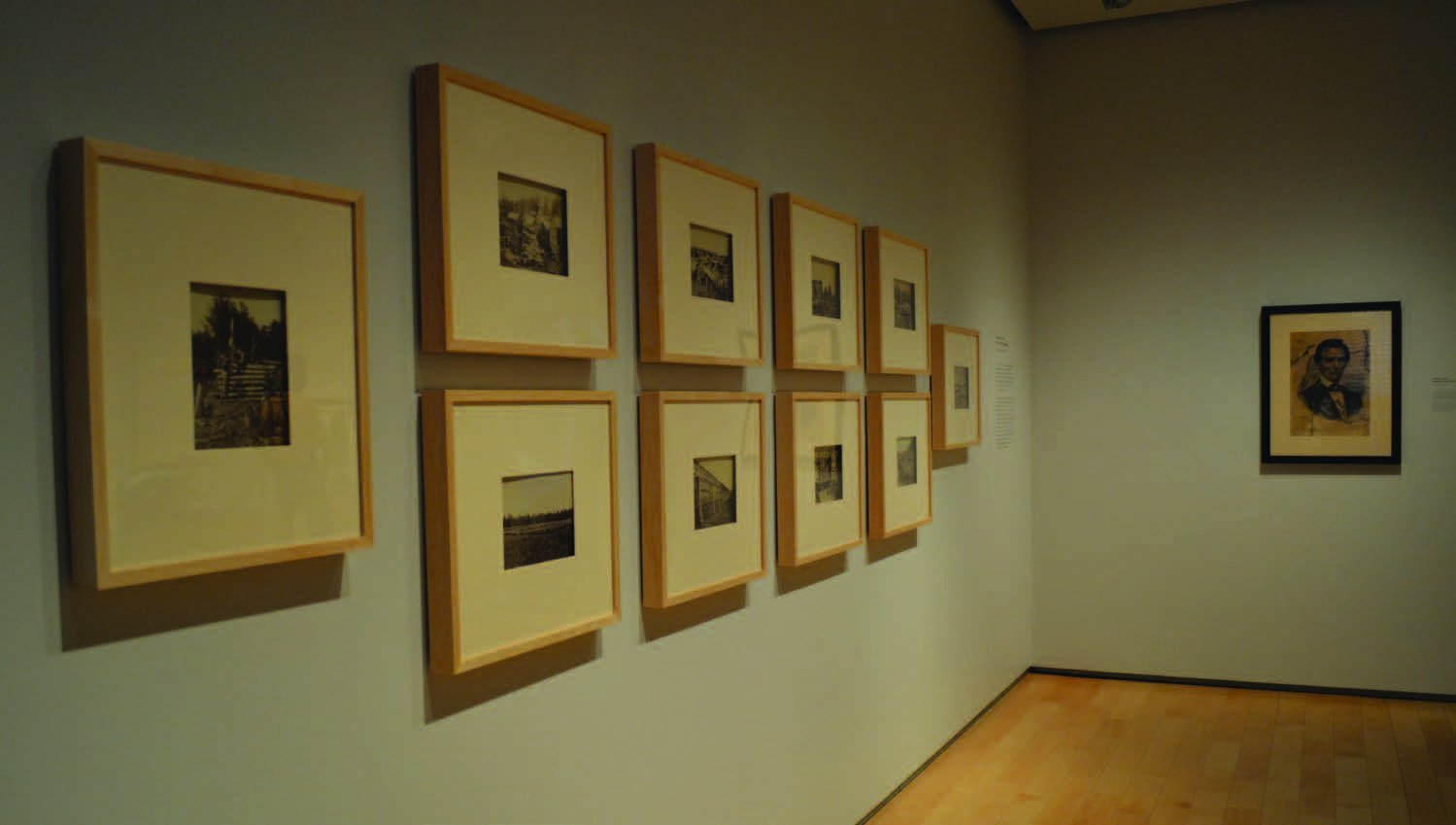
Since 1993, exhibitions of the Emancipation Proclamation have been limited to only a few days each year, a measure taken to help preserve this fragile, historical document. At all other times, the Emancipation Proclamation is stored at the National Archives in Washington D.C., where it is kept in a climate-controlled environment and protected from exposure to light in an effort to prevent photochemical deterioration.
National Archives Senior Registrar James Zeender explains that it is a longstanding practice among museums to share their holdings, “In a very general way, that’s what museums do is to make available our cultural heritage,” Zeender says. “The National Archives wants to do that as well.”
According to Zeender, it’s also common practice to require stringent security and environmental conditions be met by institutions looking to borrow materials. Museums seeking to borrow items from the National Archives must also demonstrate that an exhibition has educational value.
WHAT TO EXPECT
General admission to the museum, including admission to view the Emancipation Proclamation, is $10 and available on a first-come, first-served basis. Museum members can present their membership cards to receive a FASTPASS to jump to the head of the line to view the Emancipation Proclamation with minimal wait time.
Curator Wolfe says the exhibition space is intimate, located in three galleries on the second floor of the museum.
“The gallery is transformed into more of a history exhibition format,” Wolfe says. “The objects will be accompanied by extended text material that allows people to really dig deeper into the history of these objects.”
An interpretive video is also available in one of the galleries for visitors who may not want to read the accompanying text.
While the exhibition runs through Nov. 2, the Emancipation Proclamation is only on display for four days between Oct. 30 and Nov. 2.
“I think the museum senses a great enthusiasm from the community about this exhibition. The museum is proud to present the signature event of the 2014 sesquicentennial festivities,” Wolfe says, “and we’re, of course, extremely thankful to the E. L. Wiegand Foundation, who’s underwritten this entire project.”

